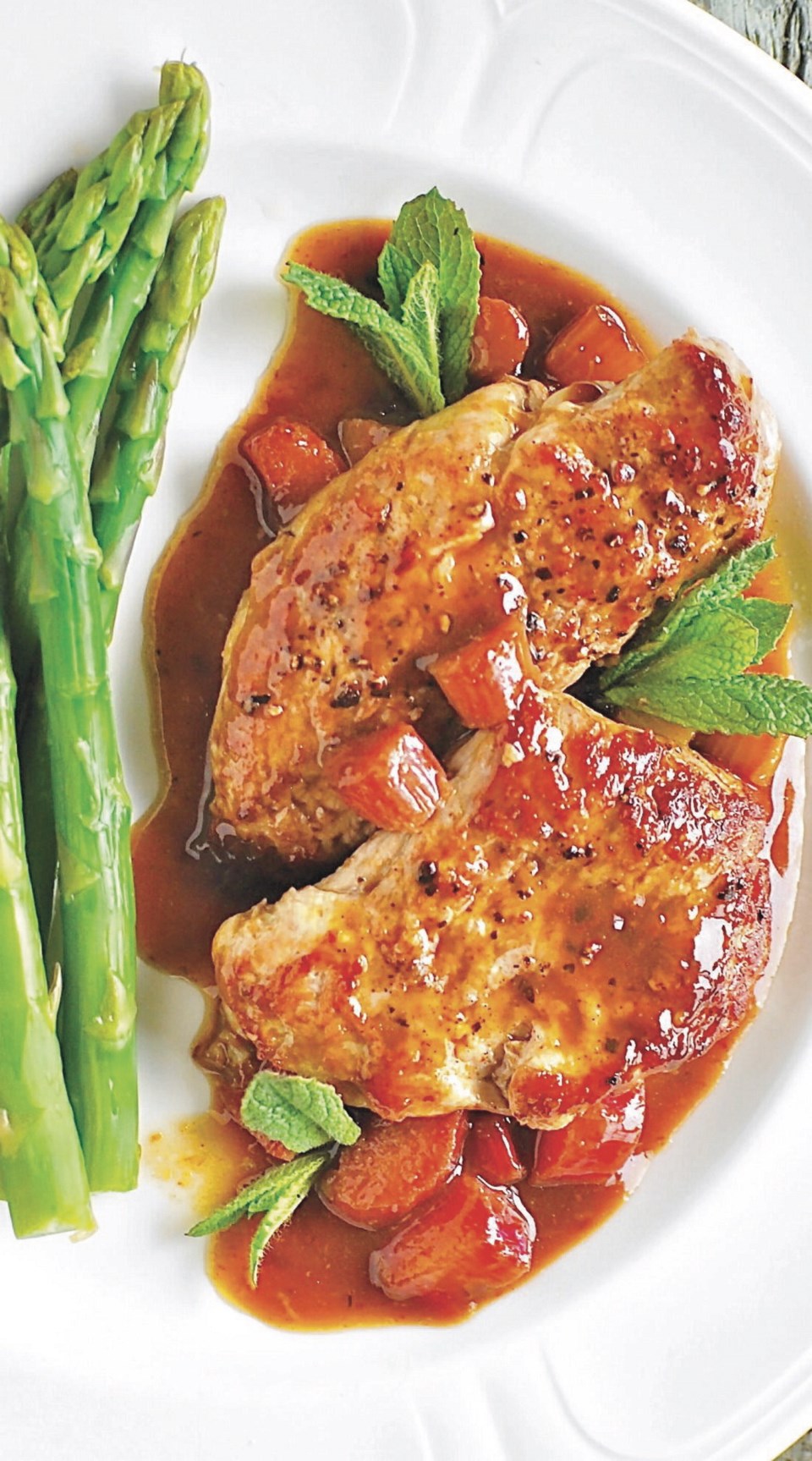I bought some first-of-the-season rhubarb at a farm market, not knowing how I would prepare it. That planning started on my way home, and my first I thought was to make a dessert with it, maybe a streusel-topped pie or a nicely spiced crumble I could serve with ice cream.
But I soon realized that I had not made a plan for dinner that night, so maybe I should first use some of that rhubarb in a savoury dish, and I did.
When I have done that in the past, I most often diced the rhubarb and used it as the focal point in a sweet and tangy sauce to serve with chicken, duck and even fish, such as salmon.
This time, I decided pork tenderloin cut and formed into medallions would be my protein choice. I believed a rhubarb sauce spiked with such things as orange, balsamic vinegar and ginger would lift that pork’s fairly mild flavour, and I was correct.
Pork tenderloin, as with beef tenderloin, is lean, boneless and very tender, hence its name. Where it differs greatly from beef tenderloin is in price. For example, where I bought, pork tenderloin cost $1.87 per 100 grams, while the beef tenderloin cost $4.85 per 100 grams, more than two and half times the cost of the pork.
That makes pork tenderloin a pretty budget-friendly ingredient to build a nice meal around. For example, the 400-gram piece I used in today’s recipe that serves two cost $7.48 — or $3.74 per portion.
You could serve the saucy pork medallions with a green vegetable, such as asparagus, and rice pilaf, orzo or miniature, boiled potatoes.
Pork Medallions with Orange Balsamic Rhubarb Sauce
Tender pieces of pork seared and then flavoured with a sweet and tangy rhubarb sauce. The recipe could be doubled or expanded even further.
Preparation time: 30 minutes
Cooking time: About 15 minutes
Makes: Two servings
For the sauce
1/3 cup orange juice
2 Tbsp brown sugar
2 tsp balsamic vinegar
1 tsp soy sauce
1/2 tsp finely grated fresh ginger
1 tsp cornstarch
• pinch cayenne pepper
3/4 cup diced fresh rhubarb (see Note)
For the pork and to finish
1 small- to medium-sized pork tenderloin (about 375 to 400 grams), trimmed of any fat and silverskin
1 1/2 Tbsp vegetable oil
• salt and freshly ground black pepper, to taste
3 Tbsp white wine or chicken stock
• fresh mint sprigs, for garnish (optional)
Place all ingredients for the sauce, except rhubarb, in a small pot and whisk until smooth. Mix in the rhubarb. Bring to a gentle simmer and cook until the rhubarb is just tender, but still very much holding its shape, about three minutes.
Remove sauce from the heat, cover and set aside until needed below.
Cut the pork tenderloin widthwise into four equal pieces, and then set them upright, spacing each one a few inches apart. You’ll have to press on the tail end piece of tenderloin to make it sit upright.
Cover the pork with plastic wrap. Now firmly press on each piece of pork with the palm of your hand, or use a kitchen hammer to pound it, into medallions, each about 3/4-inch thick.
Heat the oil in a skillet set over medium-high. Season the pork with salt and pepper and cook three minutes on each side, or until just cooked through. Transfer pork to a clean plate.
Drain excess oil from the skillet. Pour the wine (or stock) into the skillet and simmer and reduce by half. Pour the rhubarb sauce into skillet and bring to a simmer.
Add the pork to the skillet, turn to coat with the sauce, and heat through two minutes. Set two pork medallions on each of two plates, top with sauce and serve, garnished with mint sprigs, if desired.
Note: One medium, cleaned and trimmed stalk of rhubarb should yield the amount needed here. Diced in this recipe means to cut into fairly small, 1/2-inch cubes. Fresh, first-of-the-season B.C. rhubarb is beginning to appear at farm markets and some supermarkets. If you can’t find it, frozen, thawed rhubarb will also work in this recipe.
How to make pork tenderloin medallions
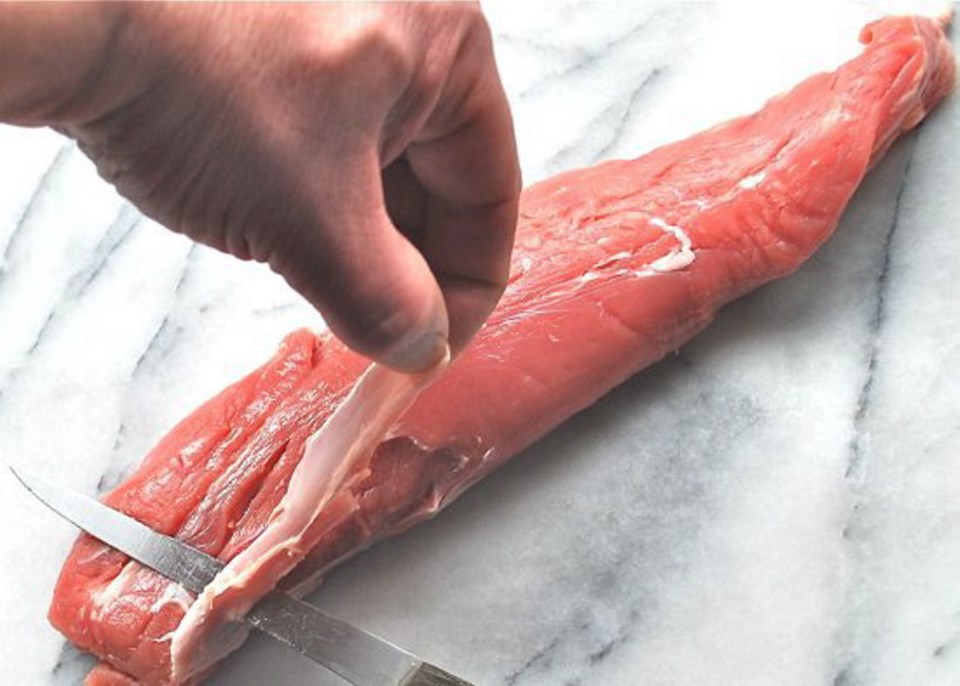 1. Carefully remove the silverskin from the pork tenderloin, a silvery, tough connective tissue that runs along the top of the flesh. To do that, slide your sharp, thin-bladed knife under a strip of it. Use your non-cutting hand to hold the silverskin taut and then, with your knife angled slightly upward, slide it down the tenderloin to remove it. Also, remove any loose fat on the tenderloin.
1. Carefully remove the silverskin from the pork tenderloin, a silvery, tough connective tissue that runs along the top of the flesh. To do that, slide your sharp, thin-bladed knife under a strip of it. Use your non-cutting hand to hold the silverskin taut and then, with your knife angled slightly upward, slide it down the tenderloin to remove it. Also, remove any loose fat on the tenderloin.
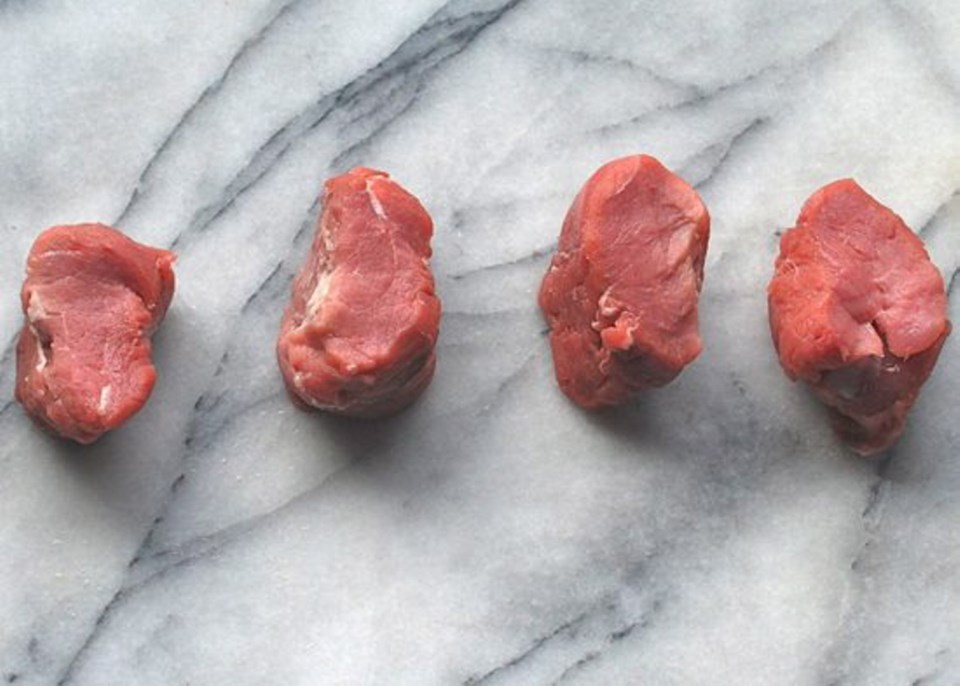 2. Cut the pork tenderloin widthwise into four equal pieces, and then set them upright, spacing each one a few inches apart. You will have to press on the tail end piece of tenderloin to make it sit upright.
2. Cut the pork tenderloin widthwise into four equal pieces, and then set them upright, spacing each one a few inches apart. You will have to press on the tail end piece of tenderloin to make it sit upright.
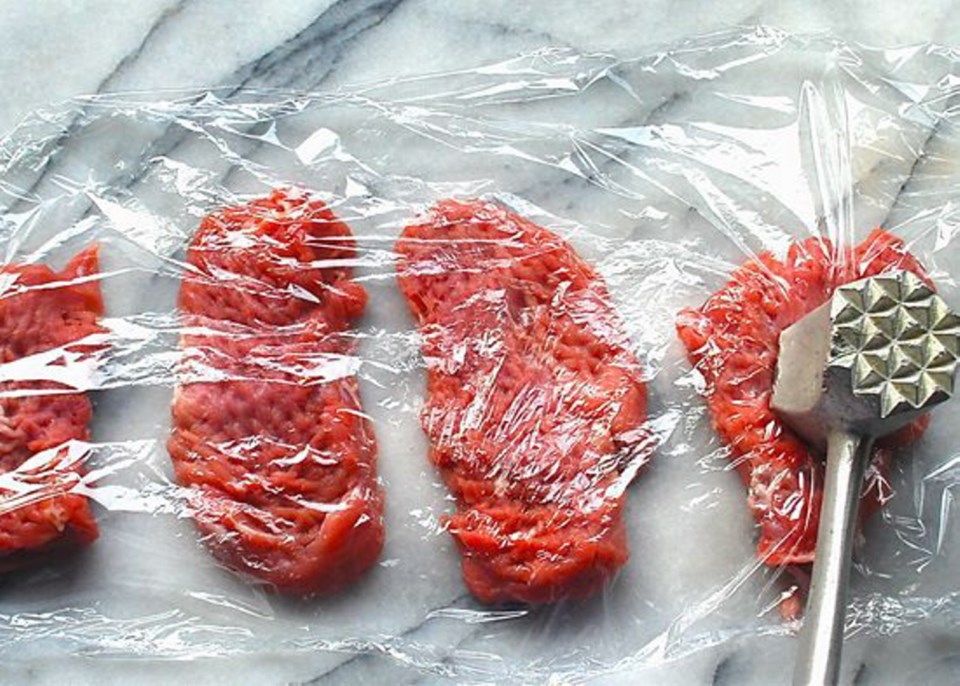 3. Cover the pork with plastic wrap. Firmly press on each piece of pork with the palm of your hand, or use a kitchen hammer to pound it, into a medallion that’s about 3/4-inch thick.
3. Cover the pork with plastic wrap. Firmly press on each piece of pork with the palm of your hand, or use a kitchen hammer to pound it, into a medallion that’s about 3/4-inch thick.
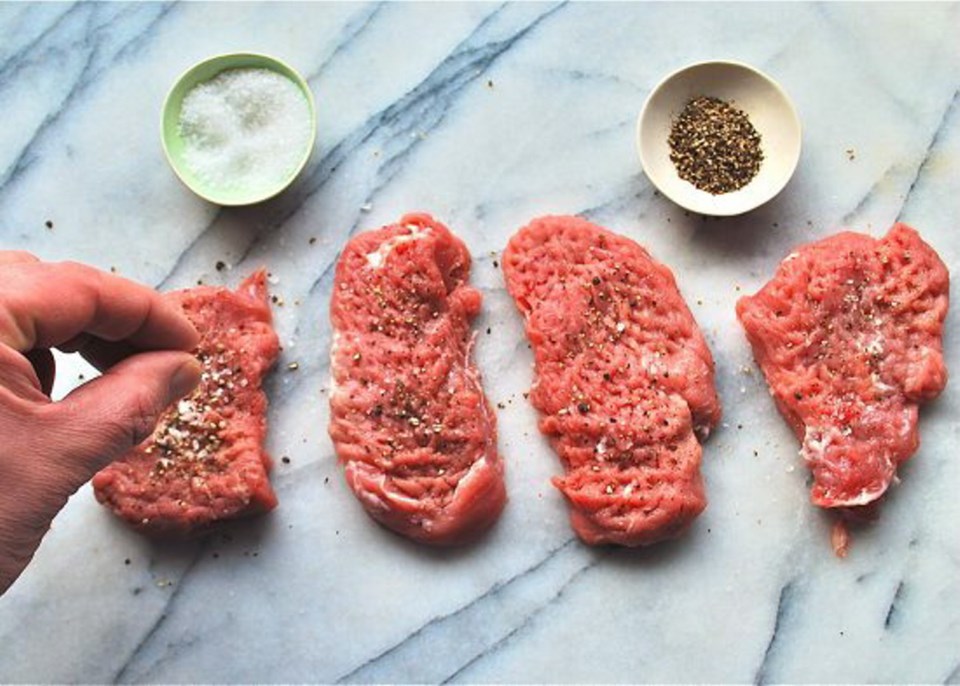 4. Uncover pork, season with salt and pepper, and it’s ready for cooking.
4. Uncover pork, season with salt and pepper, and it’s ready for cooking.
Eric Akis is the author of eight cookbooks. His columns appear in the Life section Wednesday and Sunday.
